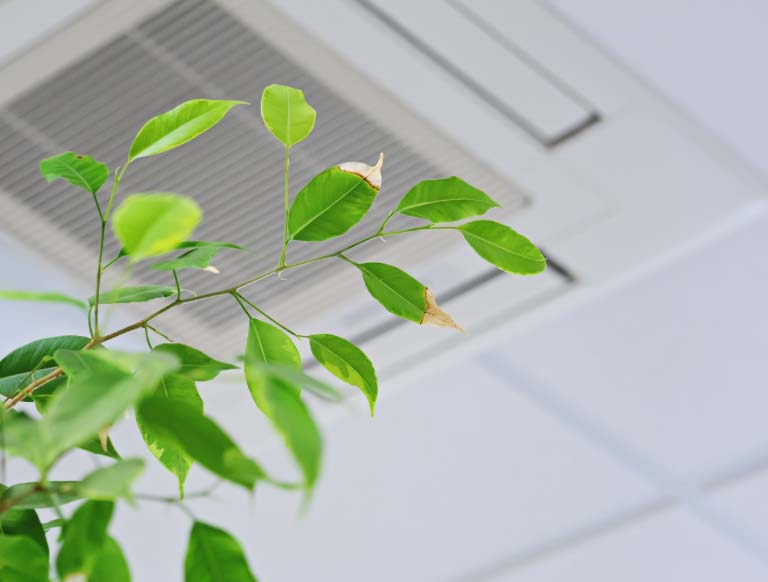Classroom Air Quality - A National Scandal
Indoor air quality in UK schools has been deemed “scandalous” and a threat to health by BESA. It's time we pay attention.

National Crisis: Poor Air Quality in Classrooms
Why should we start paying attention to indoor air quality (IAQ) in UK schools? We should because the Building Engineering Services Association (BESA) recently declared the state of indoor air quality in UK schools to be “scandalous” and a direct threat to the health and well-being of children and teachers.
For instance, The Air Quality in UK Classrooms Report states that 72% of 133 teachers said their schools suffer from poor indoor air quality. Furthermore, 90% of the teachers sensed that the air quality of their classrooms affects the behaviour, health, and attitude to work of students and teachers.
77% of the teachers further testified that poor air quality in classrooms affects the concentration and comprehension of students. Thus, these findings bolster BESA’s declaration and show that UK’s local authorities and central government need to implement urgent new measures to curb the national health scandal.
Health hazards of poor IAQ in classrooms
The health effects of poor indoor air quality in classrooms cannot be over-emphasized. According to Charity Global Action Plan, the air quality issue is more critical now than ever in UK schools because over 3.4 million children are schooling in unhealthy environments. And a quarter of schools are located in highly polluted areas or near highly polluting roads.
When the air in schools or classrooms is contaminated, children are exposed to severe public health risks, leading to developmental and health issues. These issues include drowsiness, fainting and disengaging. Furthermore, students can experience pains, headaches, aches, nausea, poor concentration, aggravating asthma and other lung conditions since they spend most of their time at school.
Are schools doing enough?
Air quality in the classroom is a national challenge, so no school is left out of finding a lasting and sustainable solution. After all, schools should be safe and conducive places of learning and not where children would be exposed to health and development hazards. Therefore, every school must implement measures to prevent excessive air pollution in the surrounding areas resulting from roof leaks, plumbing issues, and poor ventilation.
Improving ventilation is one of the first steps we can take when the issue of improving the air quality in classrooms is raised. However, is improving ventilation enough? Besides, many schools in the UK fail to provide an adequate ventilation rate and mainly rely on opening windows and doors. Nevertheless, opening windows and doors is impractical during cold seasons or if the school is located near a source of noise or air pollution.
Even so, having classrooms with access to natural ventilation does not necessarily translate to good indoor air quality. Thus, the need for schools to adopt and maintain clean and effective air purification and HVAC systems. HVAC and air purification systems are the way forward. Notably, 71% of the 133 teachers interviewed by Airflow Developments said they want air filtration or purification systems installed in their schools.
Air purification systems are growing in popularity because they produce high-intensity UV fields that are used to disrupt the RNA of bacteria. They do this by breaking the strands and stopping them from replicating. Despite the availability of lasting and sustainable solutions that schools can adopt, more than 25% of teachers still revealed that their schools could not improve air quality because they still needed government funding.
The role of the government
Restoring good air quality in classrooms and school environments must top the UK government’s agendas. As mentioned earlier, the UK government needs to fund schools to curb the issues caused by the below-standard air quality in classrooms. The government and local councils must also invest in modern air purification and ventilation systems, implement adequate policies on clean air, and limit air pollution around school environments.
System Hygienics offers a total solution
Providing a ventilation system is one of the cheapest solutions to poor indoor air quality in classrooms. However, schools or the UK government can only install ventilation systems if they put measures in place before and after installing them. For instance, ventilation systems must be cleaned, maintained, and frequently tested to ensure excellent classroom air quality and reduce potential hazards to students.
System Hygienics can help schools to conduct indoor air quality testing in classrooms and school environments and provide a comprehensive report to guide the decision-making of school owners and administrators.
System Hygienics offers standalone fire damper testing and duct and ventilation cleaning services for schools. You can even try out a Complete Ventilation Compliance (CVC) Package for your school to ensure your ventilation system is of satisfactory quality and students and staff are protected. For more information, contact System Hygienics today.



